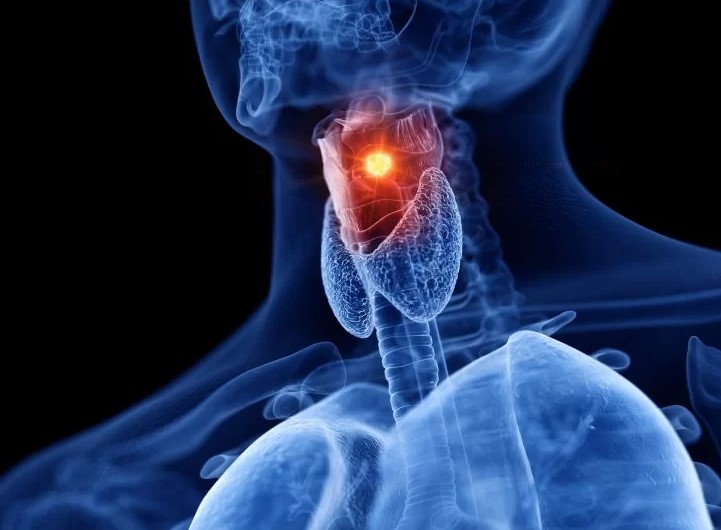
Vocal Cord Paralysis: Causes, Symptoms, Diagnosis, and Treatment
It is the loss of movement of one or both vocal cords
Laryngostroboscopy allows you to observe and record the movements of the vocal cords
It is represented by the absence of movement of one or both vocal cords with repercussions on the functions of the larynx (speaking, breathing, swallowing).
It is the second most common cause of congenital anomaly of the larynx.
Vocal cord paralysis can be congenital or acquired, unilateral (on one side only) or bilateral (on both sides) and can be linked to brain disease or damage to the vagus nerve or the recurrent nerve (a branch of the vagus nerve that innervates the muscles of the larynx).
Unilateral paralysis is often a result of surgery on the esophagus or cardiovascular system or on the mediastinum (the region between the lungs, breastbone, and thoracic vertebrae).
The involvement of both vocal cords is instead more frequently linked to congenital diseases of the central nervous system or to trauma.
In some cases it is not possible to identify the cause of vocal cord paralysis (idiopathic forms).
In unilateral forms, the main symptom is the alteration of the voice and crying with hoarseness.
Other associated symptoms can be:
- Mild laryngeal stridor, high-pitched respiratory noise that is perceived above all during inspiration;
- Initial difficulty in feeding with phenomena of aspiration of food material which tends to improve spontaneously.
In the bilateral forms prevails:
- Difficulty breathing with the presence of a loud stridor;
- Difficulty breathing;
- Jugular and intercostal indentations;
- Episodes of cyanosis;
- Apnea.
The most accurate diagnostic test is fibronolaryngoscopy which allows you to observe the vocal cords in motion.
In some cases, it may be necessary to perform an endoscopy of the airways.
The study of the characteristics of the voice is carried out with laryngostroboscopy which allows to observe and record the movements of the vocal cords, the speech therapy evaluation and the spectral analysis of the voice (which however require the child’s collaboration).
Lung function can be studied with tests such as nocturnal pulse oximetry/polysomnography and pulmonary function tests.
In some cases it is necessary to perform magnetic resonance imaging of the brain (to rule out diseases of the nervous system) and computed tomography of the neck and chest (to rule out diseases of the mediastinum).
The study of swallowing (evaluation by the dysphagist, video fluoroscopy, scintigraphy) makes it possible to quantify the child’s feeding difficulties.
Surgery is rarely necessary in unilateral paralysis since it does not cause respiratory problems and the patients implement compensatory mechanisms which lead to a spontaneous improvement in voice and swallowing.
Speech therapy may be helpful in cooperative children.
In bilateral forms, endoscopic surgery can be performed to increase the space necessary for breathing.
CHILD’S HEALTH: LEARN MORE ABOUT MEDICHILD BY VISITING THE EMERGENCY EXPO BOOTH
Paralysis of the vocal cords, in some cases re-innervation of the larynx is performed
In severe cases, tracheostomy is required to ensure adequate breathing.
In both unilateral and bilateral forms, it is necessary to evaluate the possibility of treating the cause of the paralysis, if it is identified.
Vocal cord paralysis is not preventable
In some cases it is possible to recover vocal cord movement within 3 months.
In the absence of functional recovery, in the unilateral forms there is an improvement in the voice thanks to compensation mechanisms put in place by the child thanks also to speech therapy.
Surgical treatment of bilateral paralysis allows to increase the respiratory space.
Read Also
Emergency Live Even More…Live: Download The New Free App Of Your Newspaper For IOS And Android
Laryngitis: Symptoms, Treatment And Prevention
Laryngospasm: Causes And Symptoms
Croup (Laryngotracheitis), The Acute Obstruction Of A Child’s Airways
Fetal Surgery, Surgery On Laryngeal Atresia At Gaslini: The Second In The World
Own The Airway Part 4: Laryngoscopy
What Is Laryngectomy? An Overview
Cancer Of The Larynx: Symptoms, Causes And Diagnosis
Laryngeal Tumours: Symptoms, Diagnosis And Treatment
Vocal Cord Polyps And Nodules: How To Treat Them?
Rare Diseases, Floating-Harbor Syndrome: An Italian Study On BMC Biology
Rare Diseases, Ebstein Anomaly: A Rare Congenital Heart Disease
Rare Diseases: Nasal Polyposis, A Pathology To Know And Recognise


